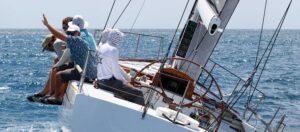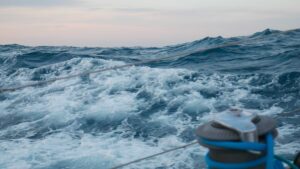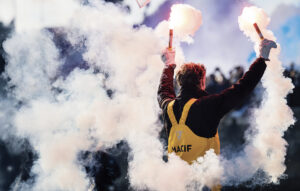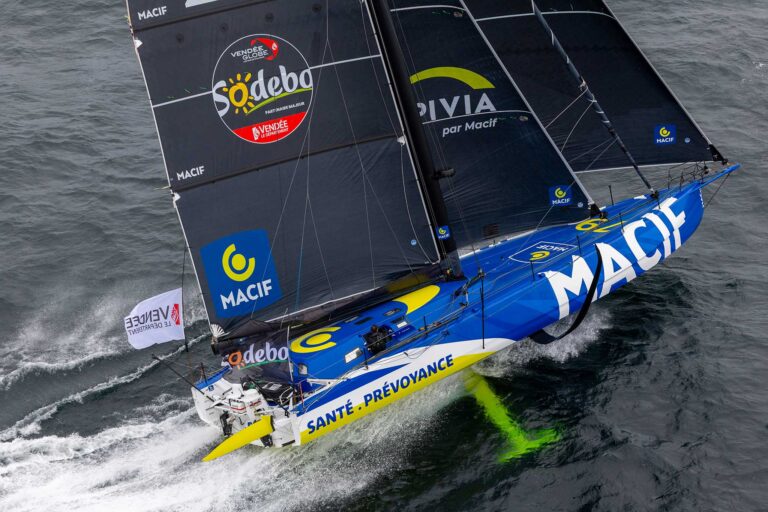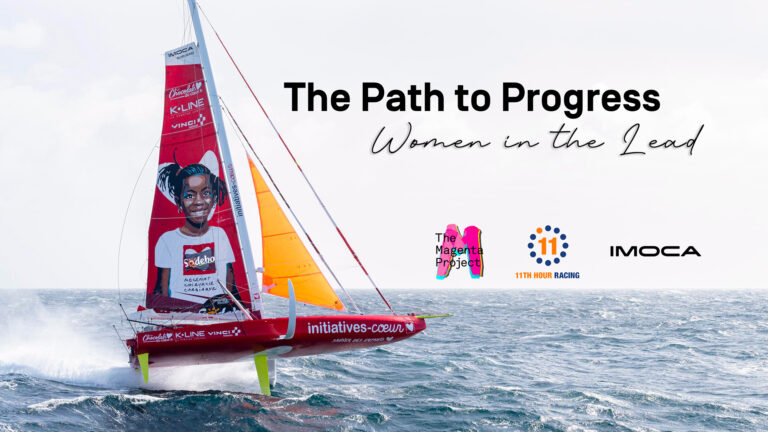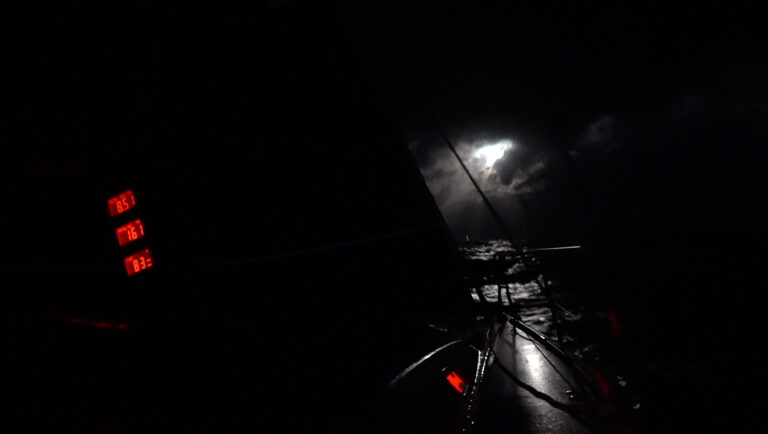Ian Campbell of the University of Southampton’s (UK) venerable Wolfson Test Unit takes data provided to him by SAIL and runs it through their velocity prediction programs and the WinDesign VPP developed in conjunction with Clay Oliver’s Yacht Research International. His detailed analysis, which begins on page 14 of SAIL’s February issue, suggests that BMW Oracle’s trimaran, USA, can fly a hull in just 8 knots of true windspeed, can sail to windward at twice the true wind speed (TWS) and can reach VMG speeds about 50 percent higher than true wind speed.
Campbell uses estimated weights and sail areas for both boats and also scales a C-Class catamaran, another class with no weight restrictions, up to 90ft. The estimated data for Alinghi’s catamaran, A5, and BMW Oracle’s USA, compare favourably with the scaled up C-Class cat.
Because these boats are so fast, apparent wind speed and wind angle will hardly change when these boats bear away on a downwind course. That means, says Campbell, that achieving maximum speed is really going to depend on how well each team knows their boat’s optimum sailing angle for any given wind strength. Both crews will try to foot fast rather than point higher and go slower.
Downwind, Vmg speeds with a Code 0 headsail can produce apparent wind angles of just 22–28 degrees. But because of more sail area and the ability to carry water ballast effectively, USA could be 20 seconds/mile faster than A5 in 8 knots of wind. In fact anytime the boats are flying a hull, says Campbell, the data shows that USA is the faster boat.
Because USA’s wing mast can quickly produce camber coming out of a tack, that will help it to fly a hull more quickly. And even though large Code 0 headsails on A5 could reduce slightly the speed advantage downwind, any time the boats are flying a hull USA should be faster. Of course with large and staggeringly powerful boats like these, anything might happen. But if the engineers and builders have done their job, and the USA crew can avoid breakdowns, they should prevail over A5, in the 33rd America’s Cup Match, and possibly by a considerable margin.
For an in-depth analysis of both boats, including polar diagrams and estimated speed differences over a full range of windspeeds go to page 14 of SAIL’s February issue.

